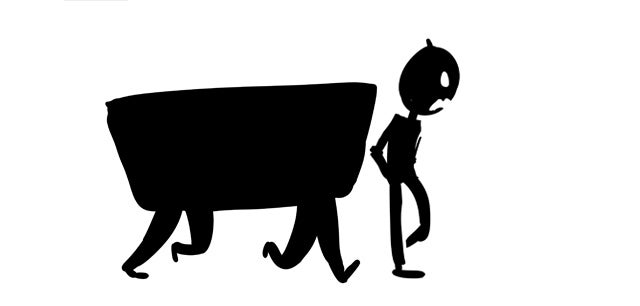Things That Go Beep-Boop In the Night
Around this time of year, I spend most of my time blogging about how creepy robots are, or how Boston...


Around this time of year, I spend most of my time blogging about how creepy robots are, or how Boston Dynamics has already built the robot that will throw a cinder block at my head. But in all honesty, I love robots. Really. Please don’t tell them I said they were creepy. Nevertheless, it appears my fear/distrust of our future overlords is not unwarranted.
In a paper published in Computers in Human Behavior, researchers at the University of Bolton suggest that the reason we get the creeped out by humanoid robots (or in this case, poorly animated video game characters) is because we perceive them to be psychopaths.
Let’s stop right there, and backtrack a bit. If you were like me a few days ago, you probably lived in a sane, well-ordered world where you knew that if you saw a Japanese humanoid robot, you would receive the heebie-jeebies. This is normal, and it has a name: The Uncanny Valley.
Coined in a 1970 essay by roboticist Masahiro Mori, it describes the sudden feeling of unease or revulsion when viewing a depiction of a human being that is realistic, but not.quite.right. As a character or robot goes from a cartoon to a real, healthy person there is a sudden dip wherein lie zombies and this:

Only there’s a problem: The Uncanny Valley probably isn’t real. In a BBC piece by Rose Eveleth, she discovers that when subjected to scientific scrutiny, the effect seems to disappear. Not only that, but the Uncanny Valley seems to be largely generational, a concept I touched upon briefly in a comic about how people perceive online avatars. Younger people don’t have a problem with computer generated characters because they’re used to them.
If the Uncanny Valley isn’t real, what makes us look at the image above* and go “Blugh!”? Personally, when I show what appears to be disgust at robots, it comes from a place of ridicule and love. And fear. See, I’m laughing_ with_ the robots… at their creators’ efforts. Only the robots aren’t laughing. Which is creepy.
That takes us back to the study mentioned at the start, _Perception of psychopathy and the Uncanny Valley in virtual characters. _Angela Tinwell and her team asked subjects to rate a series of computer generated characters exhibiting a variety of facial expressions in order to test for uncanniness (the degree to which something is not familiar). The subjects were shown characters with full facial animation, a lack of upper facial animation (the eye region), and a human. What they found was that the same traits that cause us to be weirded out by some people, are the same as those that correlated highly to feelings of uncanniness—perceptions of coldness, unconcern, untrustworthiness, and in particular, a lack of a startle reaction. Which makes sense. One of the basic human indicators of a faked smile is a lack of crinkling in the eyes. The suspicion that somebody is faking their emotions makes us uneasy.
While the paper focuses more on the creation of believable, virtual characters, perhaps the key to building a more likeable humanoid robot lies in making them seem less like cold, uncaring forgery of a human being. Like they really are. But you didn’t hear that from me.
For more robot goodness, check out Zero Moment here on the network.
_*The robot, not my comic. Though please feel free to express disgust at my comics. _